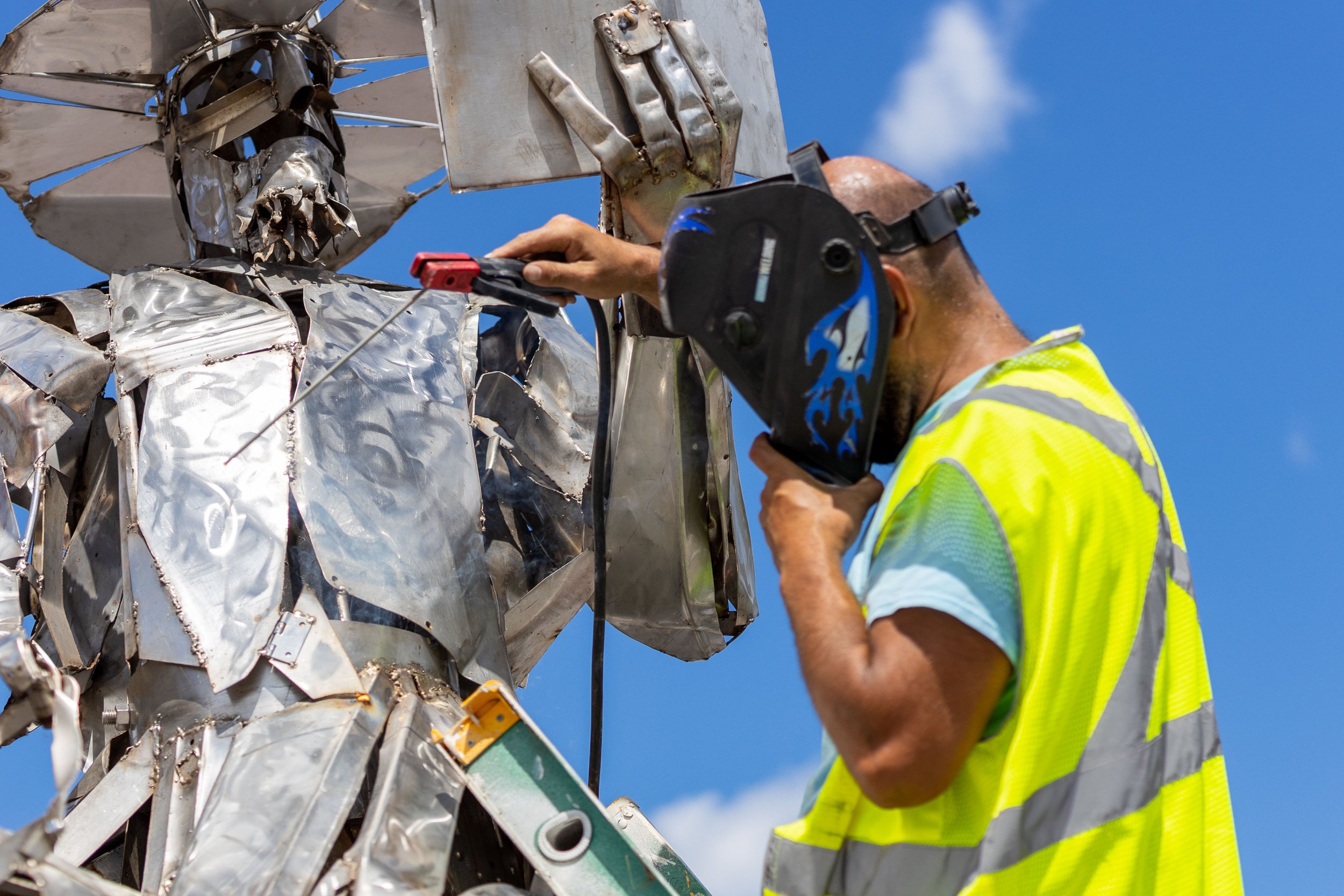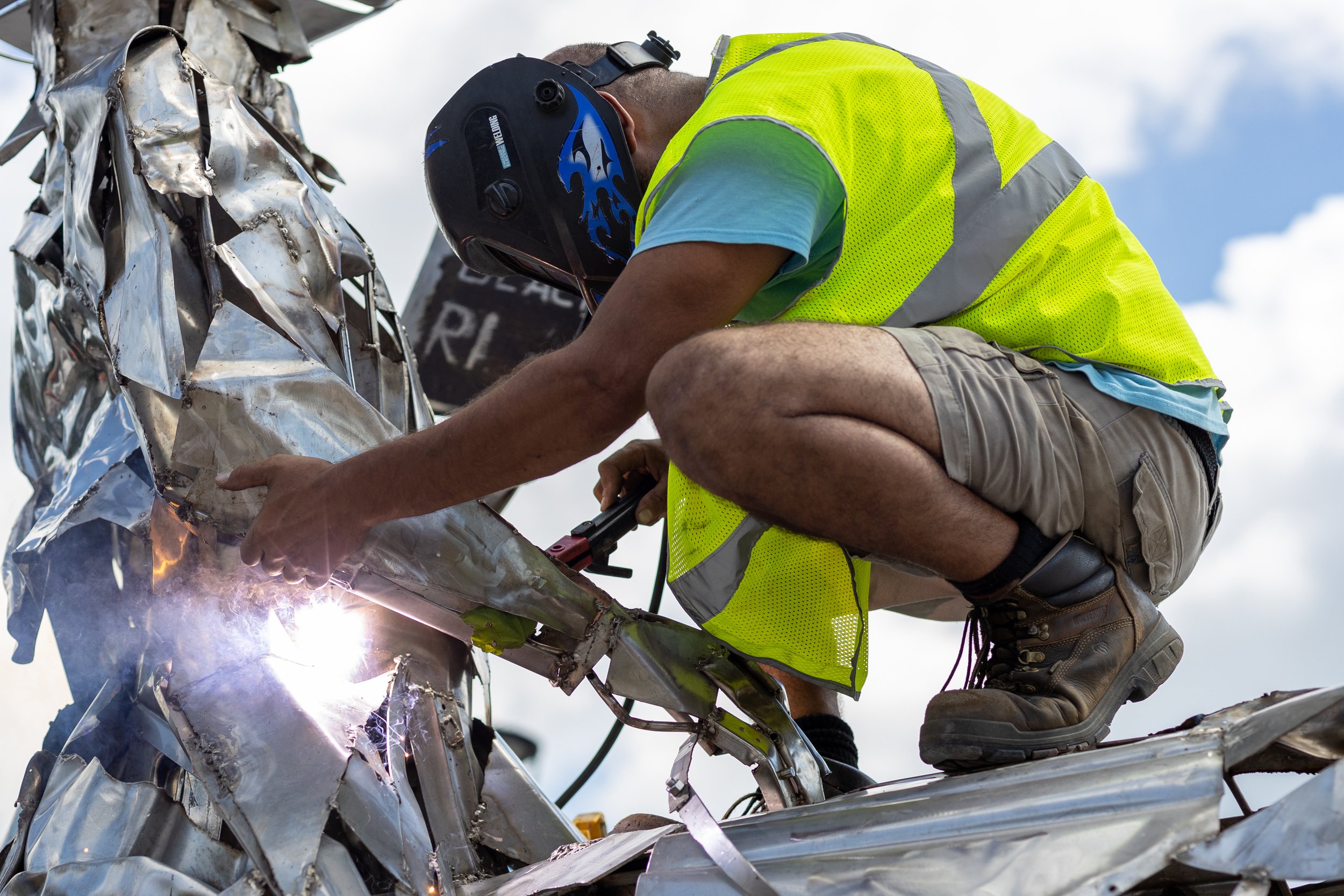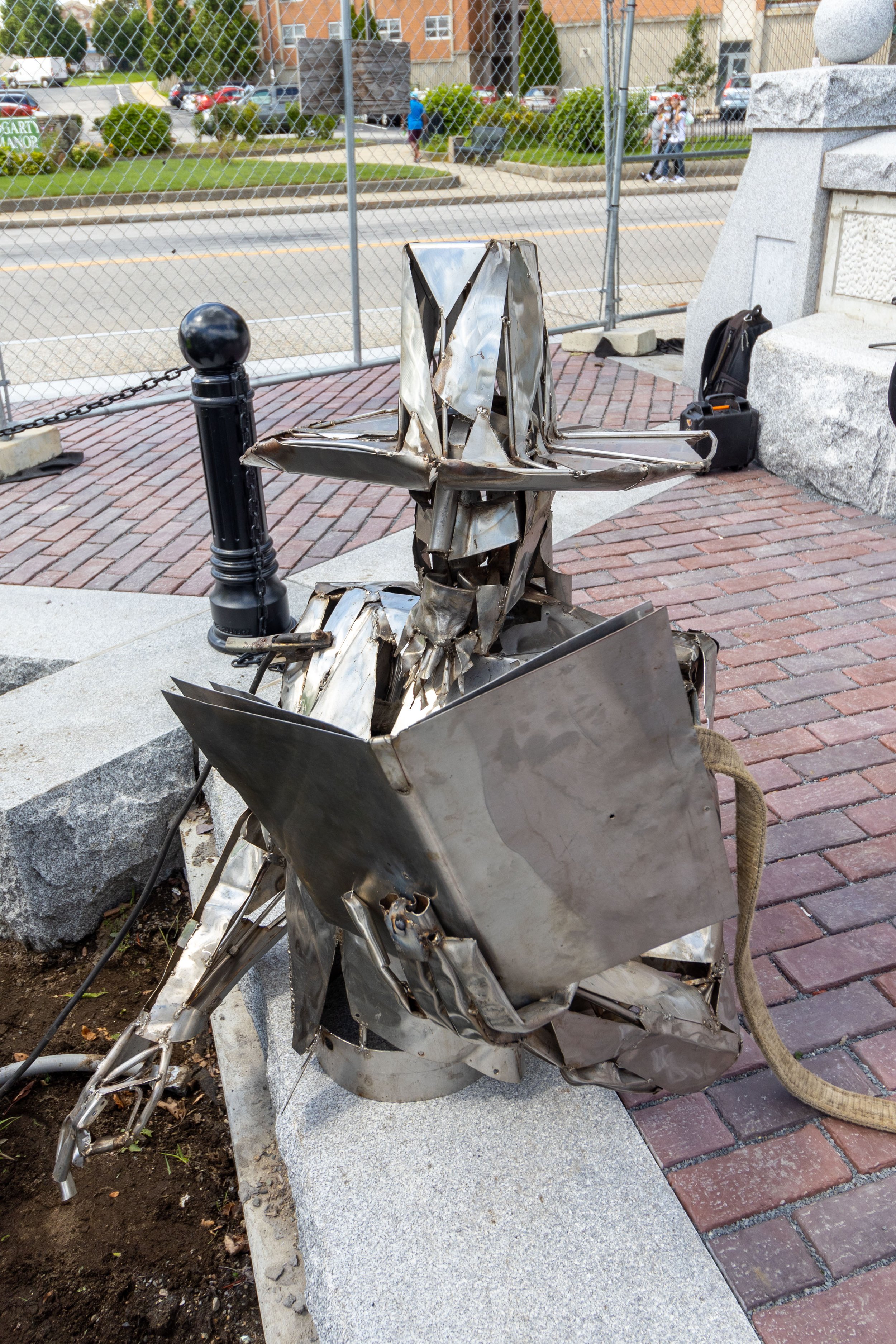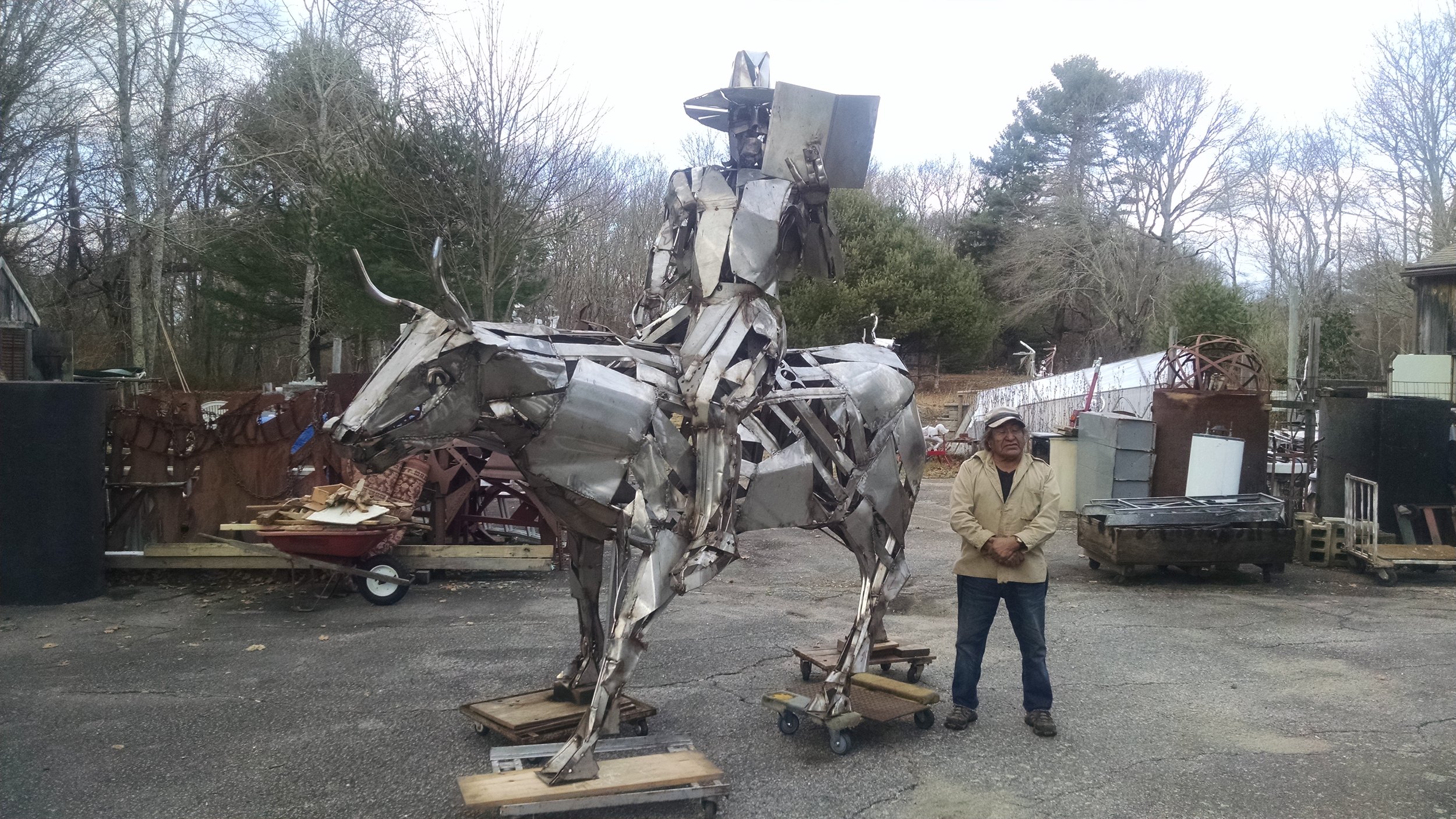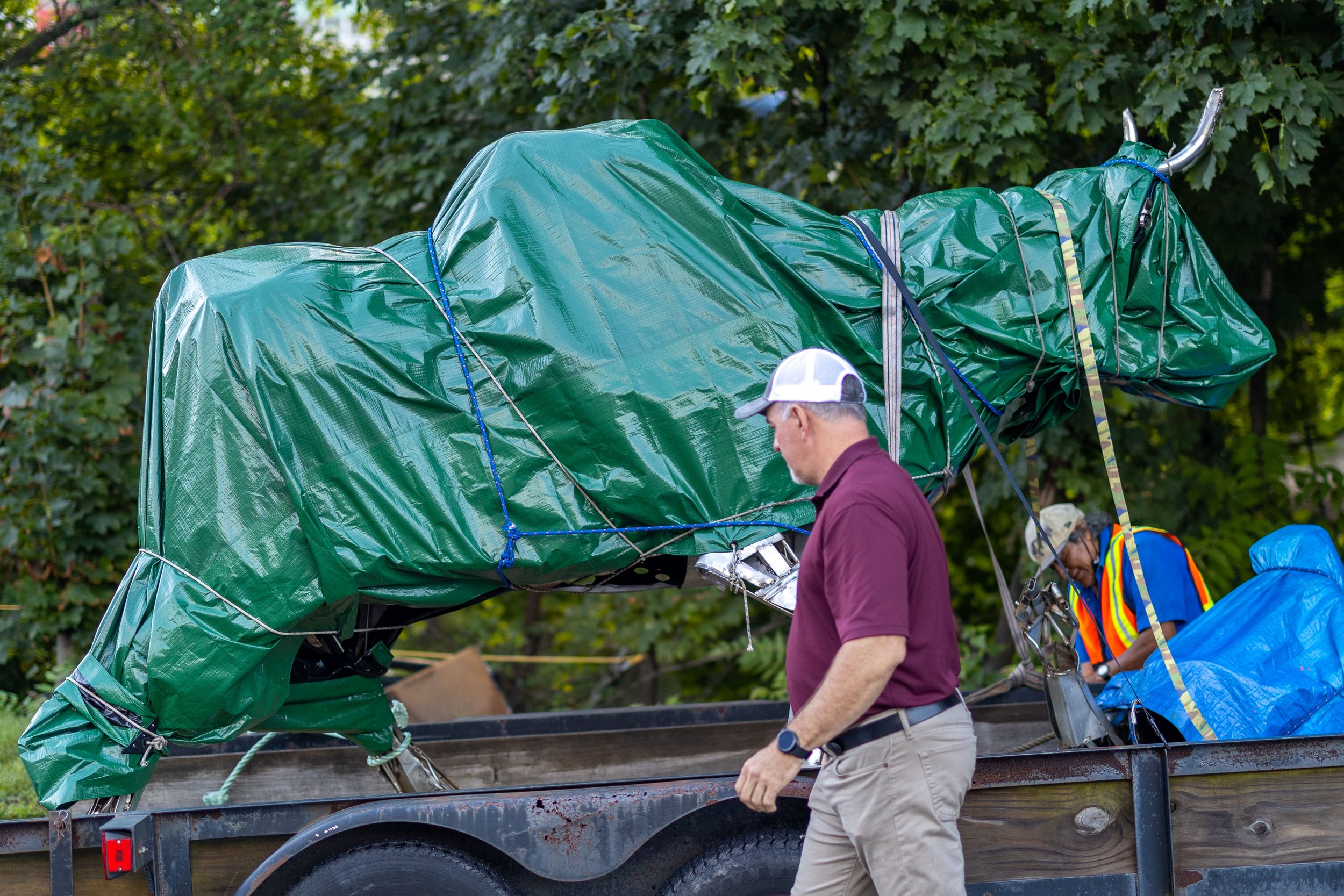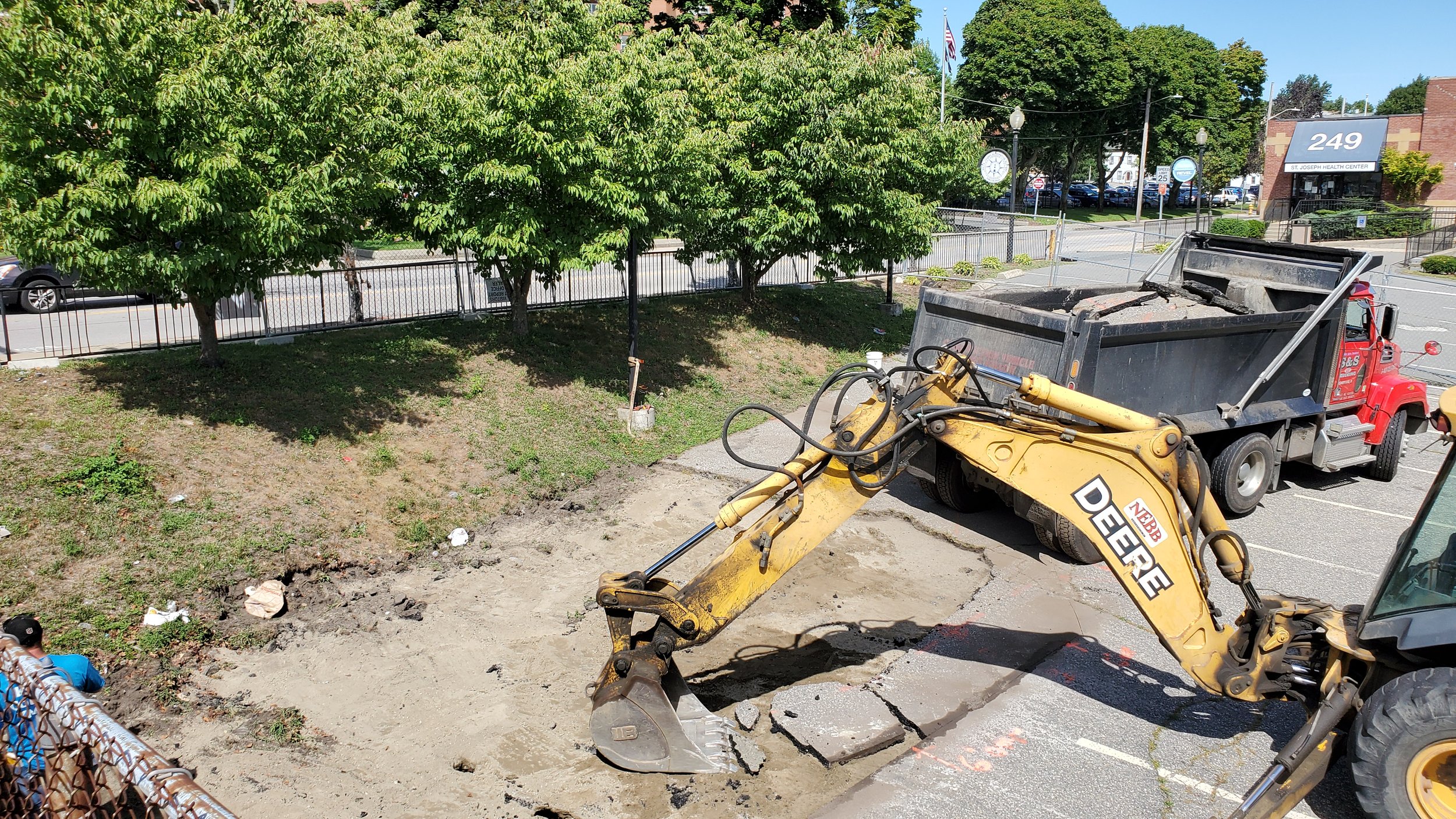
William Blackstone Monument
William Blackstone Monument
William Blackstone Monument
Corner of Roosevelt Avenue and Exchange Street, Pawtucket, RI
This sculpture, titled “Tolerance,” is an artistic resemblance of the Reverend William Blackstone, an English minister who made a home several miles from here.
His name is now attached to many places and organizations throughout the Blackstone River Valley. The idea for a sculpture on this site began in the mind of Morris Nathanson, an internationally-known designer and artist, and a fervent advocate for the arts in Pawtucket.
Morris was born in Pawtucket, and in his childhood experienced anti-semitism. He was inspired to enlist in the Navy during World War II when he learned about the Nazi policies of exterminating Jews in Europe. In the early 1960s Morris participated in the Freedom Rides in Alabama, assisting the anti-violence and equal rights campaigns of Dr. Martin Luther King. Morris later was a social worker helping poor families in Providence.
He pursued and excelled at his artistic career, and eventually came back to his hometown of Pawtucket and purchased the former Rhode Island Cardboard Company mill on Exchange Street, just across the now-named Morris Nathanson Bridge over the Blackstone River.
This sculpture, created by Peruko Ccopacatty, was funded by Pawtucket’s longtime businessman and community leader Louis Yip, and facilitated by the Blackstone Valley Tourism Council. The setting and granite carvings were designed by BETA Engineering. The piece is here to remind us that there are innumerable stories and ideas conveyed in what we see around us.
William Blackstone (1595 - 1675)
William Blackstone was an ordained Episcopal priest who in 1623 agreed to serve as the clergyman for an expedition from England to America. They arrived in Weymouth, Massachusetts, but within two years, everyone else in the expedition had returned to England. William remained, living on the western edge of the Shawmut Peninsula, the land on which Boston was eventually built.
He was there alone for five years before the Puritan migration to Massachusetts began. The Episcopalian Blackstone had a tenuous relationship with the Puritans, so in 1635 he moved 35 miles south to land that was called Pawtucket, in the Algonquian language, near the Great Tidal River named Kittacuck.
The place where William made his home was then within the bounds of the Plymouth Colony, but is now in the town of Cumberland, Rhode Island. Blackstone called his home “Study Hill,” and there he tended cows, grew apples, and spent time reading his many books. He married and had a son. William was friendly with the Narragansett chiefs Miantonomi and Canonchet, and with the Wampanoag chiefs Massasoit and Metacomet until his death in 1675. More than three hundred years later Reverend Blackstone is memorialized by the river and its valley that now bear his name.
About the Artist Peruko Ccopacatty
Peruko Ccopacatty was born in Peru, near Lake Titicaca, where the Aymara people have lived for at least 800 years. His artistry clearly expresses his indigenous Andean heritage and the rich cultural history is easily seen in his unique and eye-catching metal sculptures. Ccopacatty’s work has been described as “exuberant” and “dynamic.” He uses forms from the sacred symbols of his birthplace to convey movement and fluidity in his murals and metalworks. His art depicts aspects of humanity, whether by forming metal to look like muscles, or by leaving empty spaces between the metal where spiritual energy can reside. Ccopacatty graduated in 1976 with high honors from the National School of Fine Arts in Lima, Peru, and after finishing his post-graduate work in 1981 he came to Rhode Island. He has a studio in West Kingston and is represented by Skye Gallery in Providence.
Artist Statement:
For sculptor Ccopacatty, creating this piece invoked the prophecy of the Eagle and the Condor uniting in the same skies to bring about universal peace. He has titled it “Tolerance,” to celebrate the intention of the prophecy. William Blackstone shared this land with Native Americans and he spoke their language. He is shown riding a bull, an animal whose slow walk is well-suited to his passion of reading books. Ccopacatty hopes that Pawtucket will accept this piece as a way of remembering the centuries of immigrant skill and energy that joined with the traditions of the native peoples who still live in this river valley.
Native American Prophecy in our Region
An ancient prophecy told by many indigenous peoples of the Americas predicts that the Eagle who flies in the northern skies, and the Condor in the southern skies, will one day fly together to bring reconciliation and healing for all people. Some versions of this prophecy describe the Eagle as being productivity-minded and utilizing technology to develop an industrial society, while the Condor follows a path of intuition, artistic creativity, and a connection with the Great Spirit.
The prophecy foretold that in 1490, a time called the 8th Pachakuti, the Eagle would prevail and the Condor would be nearly extinct. This prediction is mirrored in history, when Christopher Columbus arrived in North America and the era of European settlement began. The Eagle dominated the North as expansion and industrialization usurped the land, and the Condor was almost eradicated. In this region, the Condor is represented by the indigenous tribes of the Narragansett, Nipmuc, Wampanoag, and Pokanoket. The prophecy also said that around 1990, in the 9th Pachakuti, there would be a resurgence of the Condor, and a chance to unite with the Eagle, to restore balance and achieve cooperation amongst all people on earth.

